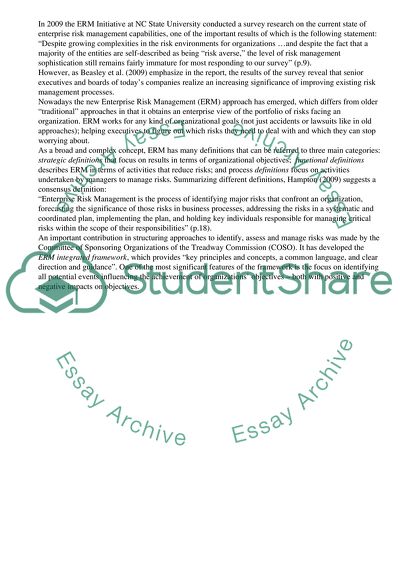Cite this document
(ERM Assessment Tools Literature review Example | Topics and Well Written Essays - 2750 words, n.d.)
ERM Assessment Tools Literature review Example | Topics and Well Written Essays - 2750 words. Retrieved from https://studentshare.org/management/1738265-enterprise-risk-management
ERM Assessment Tools Literature review Example | Topics and Well Written Essays - 2750 words. Retrieved from https://studentshare.org/management/1738265-enterprise-risk-management
(ERM Assessment Tools Literature Review Example | Topics and Well Written Essays - 2750 Words)
ERM Assessment Tools Literature Review Example | Topics and Well Written Essays - 2750 Words. https://studentshare.org/management/1738265-enterprise-risk-management.
ERM Assessment Tools Literature Review Example | Topics and Well Written Essays - 2750 Words. https://studentshare.org/management/1738265-enterprise-risk-management.
“ERM Assessment Tools Literature Review Example | Topics and Well Written Essays - 2750 Words”, n.d. https://studentshare.org/management/1738265-enterprise-risk-management.


